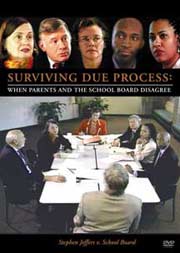School is supposed to be a place where students feel safe and secure, and where they can count on being treated with respect.
Bullying can have devastating effects on victims:
- Difficulty concentrating on school work
- Marginal to poor academic performance
- High absenteeism and dropout rates
- Enduring psychological scars
What is the seriousness
of bullying in American schools?
- 29.9% of students self-reported frequent involvement in bullying at
school
- 13% participating as a bully
- 10.9% as a victim
- 6% as both
It is important for schools to help
children and young adolescents learn how to manage, and potentially change, the pressure to
hurt their classmates in order to "fit in." Read more in Bullying in Early Adolescence: The Role of the Peer Group.
Here are some articles that discuss how schools can better handle bullying.
A 2006 study of urban elementary school teachers in the U.S. found that 40% of teachers admitted that they had bullied a student, and 3% did so "frequently."
"Although most professional educators are ethical in their conduct, bullying of
students by teachers needs to be recognized as a problem". Read Teachers Who Bully Students: Patterns and Policy Implications.
If you are a teacher, behavior management in the classroom is always a challenge. What is the difference between behavior management and bullying? Linda Starr says you can tell the difference. Find out in Are You A Bully?
Find out more about efforts that have been directed toward developing
school policies on bullying, staff training, and prevention and intervention
programming.
Learn as much as you can about bullying among children and youth and best practices for addressing bullying. Read What Teachers Can Do.
The National School Safety Center has excellent resource information about how to create bully-resistant schools.
Bullying in Schools
Read Bullying in Schools: Fact Sheet Series
Bullying in Schools: Discussion Activities for School Communities
Bullying in Schools: Talking with Hilda About Bullying
Preventing Classroom Bullying: What Teachers Can Do, by Jim Wright of Intervention Central.
If you want practical information for school personnel concerned with reducing bullying among students read Schools Where Everyone Belongs: Practical Strategies for Reducing Bullying, by Stan Davis.
Find out more about the National Education Association's "National Bullying Awareness Campaign".
Are you a teacher or principal?
Check out the Bullies2buddies website by Izzy Kalman, MS.
"If you are happy with your school’s anti bullying program, you may not need this website.
But if the anti bullying program doesn’t seem to be doing what you expected, you have come to the right place."
You will find a manual for teachers and parents (free download): A Revolutionary Guide to Reducing Aggression between Children
Has your school reached an agreement on what bullying is? Some think it is any sort of aggression; some limit it to physical means; some do not include indirect bullying.
From the AskERIC section on bullying, Dr. Ken Rigby defines bullying in a New Look at an Old Concept.
Studies from NoBully.org found that what works best is a whole school approach.
| Studies have found dramatic reductions in bullying of between 20-80% when school wide strategies are used. |
Read the Stop Bullying: Guidelines 4 Schools at NoBully.org.
You can find this article and many other excellent resources on bullying the Uniquely Gifted website. |





